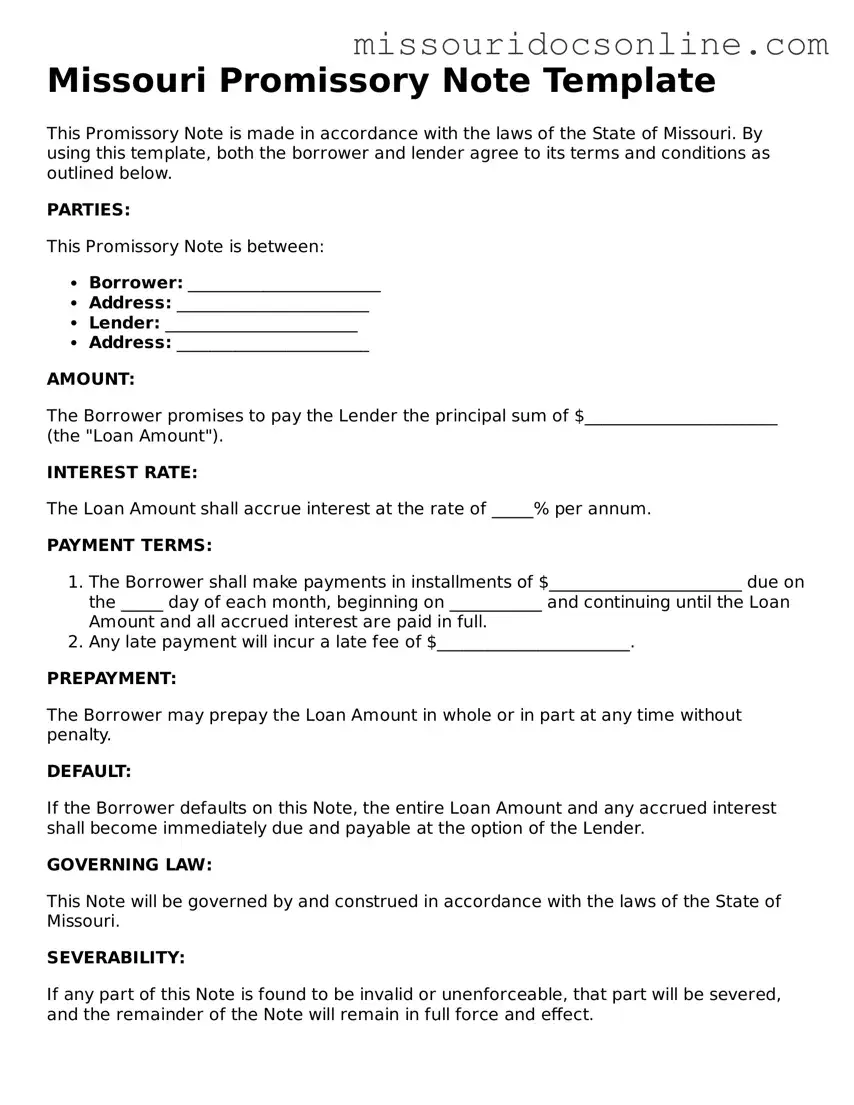Detailed Steps for Filling Out Missouri Promissory Note
Filling out the Missouri Promissory Note form is an important step in formalizing a loan agreement. Once completed, this document will outline the terms of the loan and establish the obligations of both the borrower and the lender. Follow these steps to ensure that you fill out the form correctly.
- Begin by entering the date at the top of the form. This date marks when the agreement is made.
- Next, provide the name and address of the borrower. This identifies who is responsible for repaying the loan.
- Then, enter the name and address of the lender. This indicates who is providing the loan.
- Specify the principal amount of the loan. This is the total amount borrowed, without any interest included.
- Indicate the interest rate, if applicable. This is the percentage that will be added to the principal amount over time.
- Outline the repayment schedule. Include details about when payments are due and how often they will occur (e.g., monthly, quarterly).
- Include any late fees or penalties for missed payments, if relevant. This helps clarify the consequences of late payments.
- State the maturity date. This is the final date by which the loan must be fully repaid.
- Both the borrower and lender should sign and date the form at the bottom. This signifies that both parties agree to the terms outlined in the note.
After completing the form, make copies for both parties. Keep these copies in a safe place. This ensures that both the borrower and lender have a record of the agreement and can refer to it in the future if necessary.
